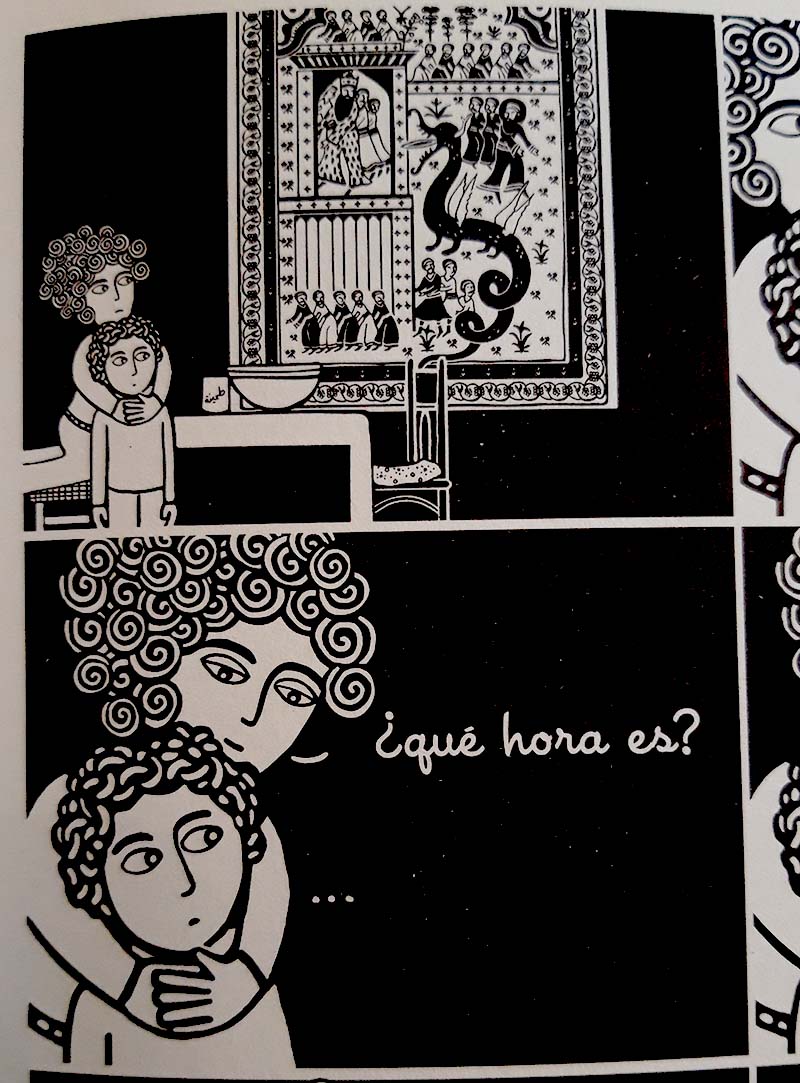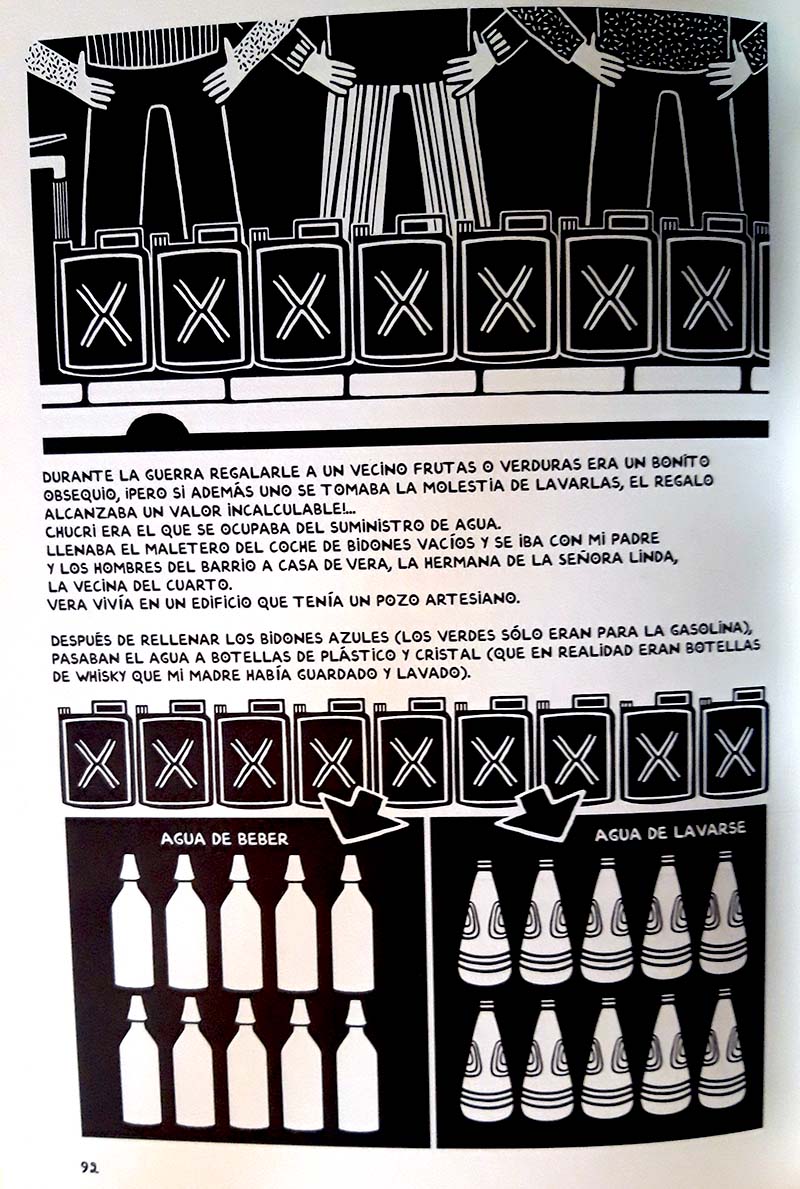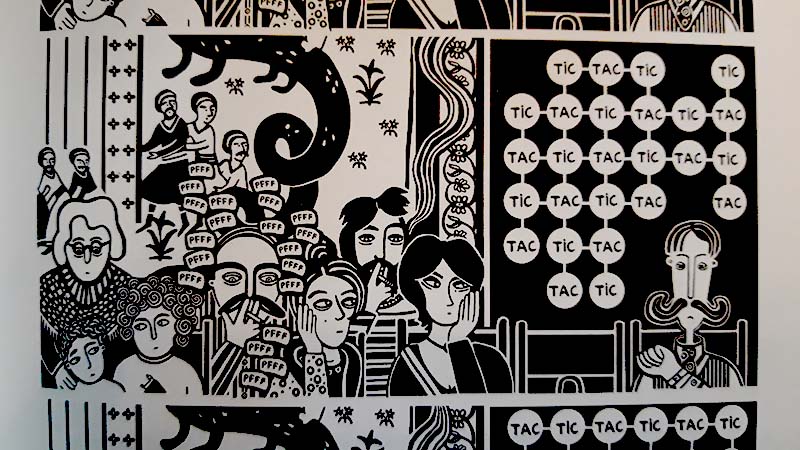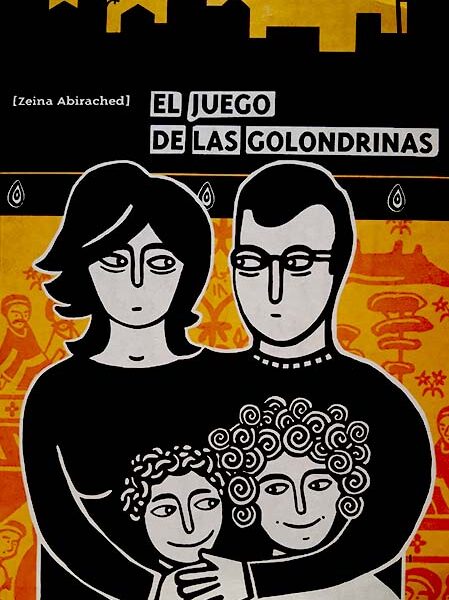I was so happy to receive, in Sarajevo, my compatriot Zeina Abirached book: Mourir, partir, revenir: Le jeu des hirondelles. I received it in the Spanish version under the title El juego de las golondrinas. We are a Spanish-Lebanese couple and sometimes “castellano” seeps into my mainly francophone reading world; and it is fine, as I found the translation very well done.
It is suggestive to read Le jeu des hirondelles, A game for swallows in Sarajevo where I am now living; another city, like Beirut, that underwent war from 1992 until 1995. Sarajevo was under siege, the city surrounded, whereas Beirut was divided in two, the Eastern and Western part. The two cities have in common the “demarcation line”: a limit defined by the fighting parties and traced spatially to delimitate opposing territories. In Beirut it was called the green line, splitting the city in half. In Sarajevo it was more sinuous, running across neighbourhoods and around the surrounding hillsides. This spatial divider within the city becomes an extremely dangerous line to cross; the minimal infraction can be deadly. In each city, inhabitants found diversions to overcome this standoff for different reasons; these détournements became the subject of many stories.

Zeina’s graphic novel starts with a mapping of the green line in Beirut to understand the location of the distinct characters and grasp the tension that underlies the story of a day in her childhood during the war of 1984. Zeina and her brother are on one side of the green line whereas their parents are visiting the grandmother on the other side. The shelling worsens throughout the day, complicating the return home of the parents and making the awaiting longer than expected for the kids. But the two children are not alone. They spend the day with the rest of the inhabitants of the building that are accustomed to take refuge in the apartment of Zeina’s parents, mainly in its entrance, considered the safest room in the building. An array of stories relating to each neighbour are recounted while waiting for the parents to come back, against a backdrop of shelling and the description of everyday life’s features in wartime. The last pages of the book close in on the beginning of another war, this time displacing totally Zeina’s family from the building.




“Le jeu des Hirondelles” shows the surreal aspect endemic to wartime: while the city is divided, rival armies are fighting, the inhabitants, the neighbours in a building strive for a sense of normality within the horror; otherwise, everyone would go mad. This is seen especially in the character of Ernest, who continues to dress up to come down to the entrance room, like the rest of the neighbours, when the situation becomes critically unsafe; or the old lady Anhala who involves the kids in the making of “sfouf” a traditional homemade cake. The sense of community created in the building helped everyone survive their personal loss and grief. After depicting the state of the city at macroscale, the novel withdraws to the cramped space of the entrance room of an apartment on the first floor of a building on the frontline of the green line where a tapestry depicting the flight of Moises and the Hebrews from Egypt hangs ironically on the wall. This safe micro-oasis escapes the uncanny situation that war inflicts on cities and inhabitants.
Many similitudes with my readings on Sarajevo during wartime emerge; from everyday essential features like the search for water, the need for gas oil and fuel, the importance of fresh food and the dangerous outings, but also the fear, grief and the absence of answers to the question: Why is this all happening?
As a child, this lived experience is unforgettable; its shadow looms over the rest of the existence. Many children changed houses during the war in Lebanon, or flew with their parents to other countries, like the swallows, in a constant state of “refugee”, then coming back and flying again. Zeina has made a beautiful record of this childhood memory that many children in Lebanon, and probably Sarajevo share.
Mourir partir revenir: Le jeu des hirondelles. Zeina Abirached. Editions Cambourakis, 2007.
El juego de las golondrinas. Zeina Abirached. Ediciones Sinsentido, 2008.

